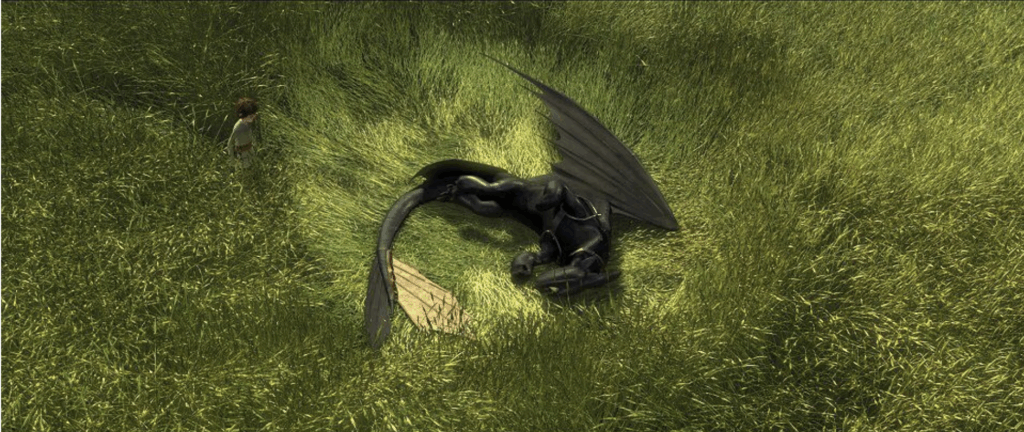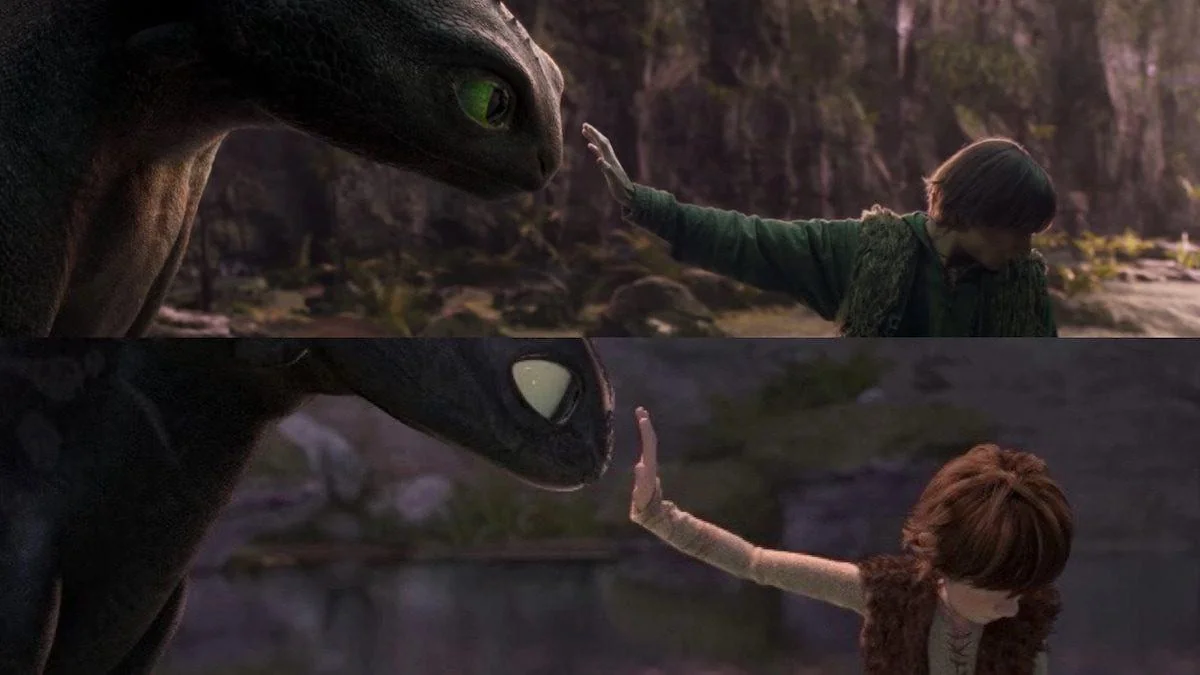
DreamWorks released the live-action remake of How to Train Your Dragon (HTTYD) in Australian theatres on July 11th, 2025. As a long-time fan of the animated trilogy and series, I was conflicted. Part of me was excited to revisit a franchise that defined my childhood, but I couldn’t shake the worry that this would fall into the trap of so many recent live-action remakes which Jenn at Fairest Run of All describes perfectly as “bad-faith cash grabs, playing on nostalgia while delivering worse versions of a movie we’ve already seen because they want our money twice for half the effort.”
After having watched the movie I can confidently say it it delivers as a solid film in its own right, with good visuals, cinematography and world building. Its one of the most accurate live action remakes and I’d argue that it would still be enjoyable even to those unfamiliar with the original. Some reviews have gone on to say that they prefer it over the animated classic, like user @swappin_thoughts on reddit who felt like the live-action allowed him to have a more emotional connection with the story in comparison to the original. The remake followed the storyline of the original to a tee, replicating most details with a few small changes (see the video of the trailer below as an example). At first this came as a relief, especially after seeing recent Disney live action remakes butcher the classics with drastic changes. I was grateful that the HTTYD remake promised such faithfulness. But after watching it, this relief quickly gave way to disappointment as it resulted in uneven pacing, humour that fell flat, and bland performances.
With the live action followed the original shot for shot, a strain could be felt. Animated characters naturally move differently, with more exaggerated expressions and gestures. This becomes an issue when real actors try to replicate the exact same motions, since it tends to come off as odd or too cartoonish. Similarly, animation allows characters to traverse scenes much faster without losing detail or emotion. Humans cannot traverse in the same way and are much slower. As a result, the pacing often felt off. Many scenes were dragged out with stale, empty shots because they mimicked the same frames as the original. On the other hand, some moments felt rushed, particularly Toothless’ dragon training sequence. This part of the story, where Hiccup bonds with Toothless while learning about dragons and simultaneously gains prestige during training, felt extremely condensed. It is a shame, as this montage is vital in showing both his progression with Toothless and his growing popularity among the Vikings.

The combination of uneven pacing and weak performances also caused the humour to fall flat. Most jokes didn’t translate well into live action, as the exaggerated delivery they tried to imitate was too over the top for the format. A toned-down approach was attempted, which suited the medium better, but ultimately paled in comparison to the animated classic. Alex Meyers explains in the video below (timestamps 7:07–9:38) that the humour falls flat particularly because of the more restrictive nature that comes with live actions. In other words, it’s difficult for jokes originally written for exaggerated animated characters to translate into live action whilst still being believable and not cringe or distasteful. Had they decided to deliver the lines slightly differently, or alter it to fit the more realistic nature, it would have landed much better.
I was also thrown off by the questionable cast choices, not because of their features. I couldn’t care less about the characters not being blonde so long as they encapsulated the characters well, but this was not the case as most of the acting came across as shallow and bland. The distinct character personas with such a unique quirks and personalities, were robbed by the dull portrayals of the cast. It can be argued that the same issue with humour occurred, whereby it’s difficult for actors to fully embody the overexaggerated traits while keeping the performance believable and not awkward. But there were a few characters which were genuinely brought to life whilst still being believable.
Stoick reprised by Gerard Butler, carried over the same commanding yet warm presence he gave the character in the original, and Snotlout, played by Gabriel Howell, also managed to capture the egotistical and childish nature from his character in the animated classic. Both fully captured their characters whilst still being believable in the new mediumn but unfortunately, others didn’t fare as well. Hiccup, played by Mason Thames, while good, never quite nailed Hiccup’s awkward essence. The teen characters on the island like Astrid (Nico Parker), Fishlegs (Julian Dennison), Ruffnut (Bronwyn James), and Tuffnut (Henry Trevaldwyn), were especially underwhelming. In the original, these characters were highly stylised with strong and distinct personalities. Astrid for her fiery determination to prove herself, Fishleg and his nerdy enthusiasm, and the twins with their grotesque yet playful nature. Lots of this personality was lost in the remake as performances felt stiff and unconvincing.
As Matthias from Dope aptly put it, “It felt like watching people who had seen the original film and then tried to copy it from memory, as if they’d forgotten why they were making it.” (time stamp 5:30 in the video below).
Overall, the How to Train Your Dragon live action remake’s faithfulness to the original, became the cause of its mediocrity. As a fan of the original, the remake has left me with a strange mix of nostalgia and frustration, leaving me to question whether live action remakes of animated media is ever truly needed.
